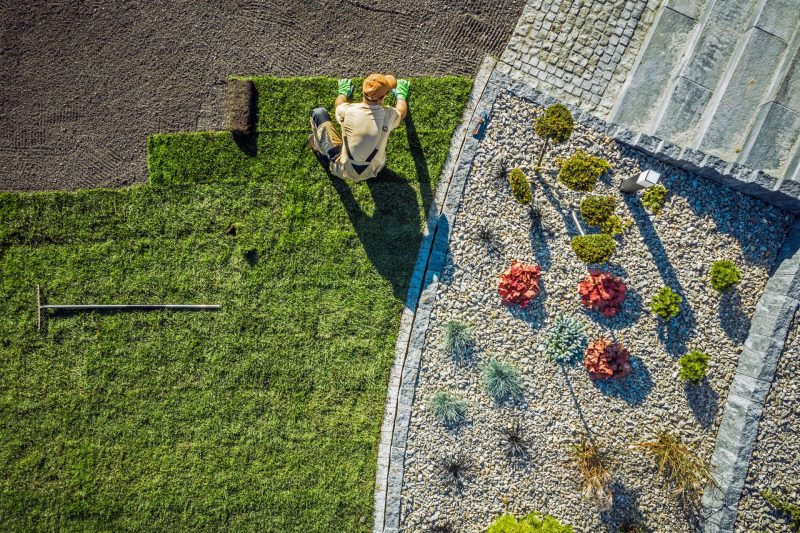Any new home would benefit from a well-kept yard that is visually pleasing and reflects your tastes. No matter how big or small, a well-kept yard gives the finishing touches to your home and boosts its value. Appropriate landscaping features can boost your yard’s appearance and impact.
While landscaping can be time-consuming, there are a few basic dos and don’ts that can help you keep your yard looking great without exhausting yourself. Here are some essential do’s and don’ts to keep in mind:
Table of Contents
1. Do: Think About Your Yard Theme
A theme can help you unite your space, and guide you in making your plant and material choices. Using similar shapes or forms across your yard helps in picking a backyard theme and in creating detailed decisions between hardscaping and soft scaping. If you need extra help with your choices, you can know more here.
When choosing a theme for your yard, think about the architecture of your house. Maintain the architectural lines and design of your home to your yard, after all, it is an extension of your home. Plants, decorations, hardscapes, and constructions can all be placed and selected according to a theme.
2. Do: Make An Effort To Use Proportion And Balance
Use a mix of trees, shrubs, and flowers of all sizes. Ensure that the various plant sizes are evenly distributed across your yard. Keep in mind that trees should be placed at least a safe distance from the house and not too close to electricity lines. A garden with plants and flowers that are similar in height, adds visual appeal.
By blending deciduous and evergreen species, you can create plants that provide color and ornamental flavor all year, including flowering shrubs, leafy groundcovers, and plants with strong stems or trunks in your landscape.
3. Do: Consider Investing In An Organic Lawn
A natural lawn will enhance your backyard landscaping plan. Synthetic turf is far less appealing than natural grass. Organic lawns are grass tolerant, and typically require less watering than traditional lawns. All that’s left for you to do now is relax and let the professionals take care of the rest.
The absence of pesticides is the real benefit of an organic lawn. Your children and dogs will be able to spend more time outside without becoming ill, so you won’t have to worry about them getting sick. Because your lawn is chemical-free, you’ll enjoy attracting butterflies, birds, and other species too.
4. Do: Keep In Mind The Attractiveness Of The Curb
While most of your efforts will undoubtedly be focused on the backyard, keep in mind that your home also includes a front yard. Extend the design elements of your landscape to the front of the house to create a unified look for the entire property.
You don’t have to go overboard with the front, it’s best to make sure that the essential qualities of your new backyard landscaping also impact the appearance of the front, so that there would be balance and uniformity.
5. Don’t: Overlook The Need For Upkeep
Remember that while you may have visions of the perfect yard, reality must be considered. Your yard should function properly and be simple to manage. Utility poles and boxes should not be obstructing the flow of traffic in any way.
Overgrown and untrimmed trees, plants, and shrubs will also decrease the overall beauty of your yard in the future. If you don’t have time or dislike mowing the lawn, consider less grass in your yard, especially if you don’t want to employ a lawn service.
6. Don’t: Rush The Process
Set aside deadlines and provide plenty of time to analyze your options before starting, if you’re doing the landscaping yourself rather than hiring a contractor.
Your landscaping project may take more time as it would, in comparison if you hired a professional. But it’s alright, the quality of the final product is more important than the speed with which it is completed.
7. Don’t: Use Invasive Species
While some invasive plants appear attractive, they cause more issues than they solve. Species that require a specific climate will quickly wilt and die. It means you’ll have to spend more money on landscaping replacement. Determine which plants thrive in your location and which exotics you should avoid by consulting a professional lawn care company.
Takeaway
A well-landscaped yard reflects the owner’s preference and style. The choice that you make in building it really matters in the long run. You must decide wisely from the materials to use, the plants to place and the theme to follow.
Your yard should be aesthetically appealing as well as functional. Make this article be your guide to perfectly balance all your decisions before starting the project.







